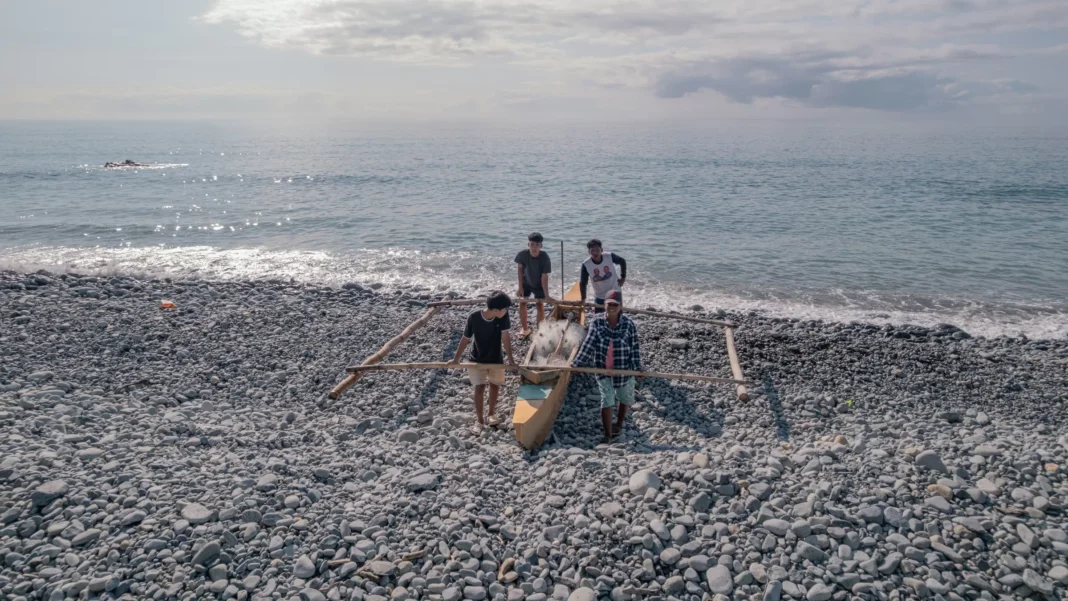As the sea levels continue to rise due to climate change, many coastal families in the Philippines are facing a daunting challenge – the fear of displacement.
For centuries, the Philippines has been a nation of seafarers, with many families living and thriving along the coast. However, with the recent rise in sea levels, the threat of losing their homes and livelihoods has become very real for these families. This has led to a sense of panic and uncertainty among coastal communities, as they grapple with the idea of having to leave their ancestral lands and homes.
The Philippines, being an archipelago, is particularly vulnerable to the effects of climate change. According to a study conducted by the University of the Philippines, the country has already experienced a 60-centimeter increase in sea level over the past century, and this trend is expected to continue at an even faster pace in the coming years. This rise in sea levels is caused by a combination of factors, including melting glaciers and ice caps, thermal expansion of the oceans, and the increase in frequency and intensity of typhoons.
One of the most affected areas in the Philippines is the town of San Teodoro in Oriental Mindoro. The town, with a population of over 20,000 people, is located on the eastern coast of Mindoro Island and is prone to flooding during typhoons and high tides. Many families in this town rely on fishing and farming for their livelihoods, and the rising sea levels have already caused severe damage to their crops and fishing grounds.
The fear of displacement is not just limited to San Teodoro but is shared by many coastal communities in the Philippines. Families who have lived on these coasts for generations are now facing the possibility of losing their homes, their livelihoods, and their way of life.
However, amidst this fear and uncertainty, there is also a sense of resilience and determination among these coastal families. They may be facing an unprecedented challenge, but they are not giving up without a fight. Instead, they are rising up to protect and defend their homes and their community.
One such example is the town of Panay, located in the province of Capiz, which has been hailed as a model community in adapting to the effects of climate change. The town has implemented various measures, such as constructing seawalls and mangrove plantations, to mitigate the impact of rising sea levels. The community has also been active in promoting sustainable fishing practices and coastal resource management, ensuring the preservation of their marine ecosystem.
The efforts of the residents of Panay have not gone unnoticed, and the town has received recognition and support from various organizations, including the Climate Change Commission and the Asian Development Bank. This serves as an inspiration to other coastal communities and shows that with determination and community support, it is possible to adapt and thrive in the face of climate change.
The Philippine government has also recognized the urgency of addressing the effects of climate change, and various programs and initiatives are being implemented to mitigate its impact. The Climate Change Commission has been working closely with local communities to develop Climate Change Action Plans, which aim to address the specific needs of each community in adapting to the effects of climate change.
In addition to this, the government has also been investing in disaster risk reduction and management, with the goal of minimizing the impact of natural disasters and protecting vulnerable communities, particularly those in coastal areas.
Moreover, the Philippines has been actively participating in global efforts to address climate change, such as the Paris Agreement, where the country has committed to reducing its carbon emissions by 70% by 2030.
While the threat of displacement due to rising sea levels is a very real and urgent issue, it is heartening to see that coastal families in the Philippines are not giving up hope. They are finding ways to adapt and protect their homes and communities, and in doing so, they are also inspiring others to do the same.
The fear of displacement may be a harsh reality for coastal families in the Philippines, but their resilience, determination, and the support of the government and various organizations give us hope that they will overcome this challenge and continue to thrive in their coastal homes. After all, as Filipinos, we have always been known for our resiliency, and we must remember that together, we can overcome any hurdle that comes our way.



